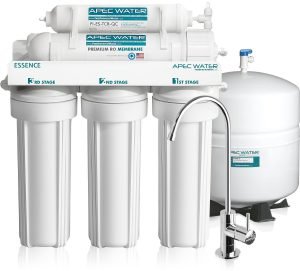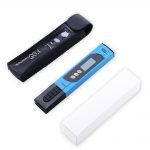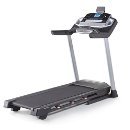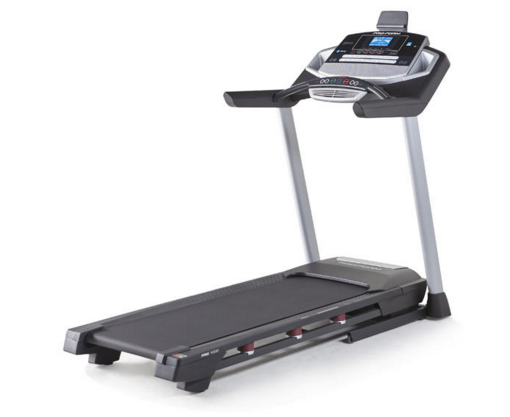Save $1000 on a Reverse Osmosis Unit
 I noticed I was getting some staining from my well water and I always knew I had poor drinking water, but this last week I had the Culligan Man out to test my water to help me figure out what my next step will be. I found out pretty quickly why that Culligan Man is so friendly. He hit me with a $5000 estimate and it only took me about an hour or so after that to start finding potential savings on-line. There were three products that made up my $5000 estimate, the water softener, a separate iron filter system and a reverse osmosis filter system. Sometime soon I will talk about the water softener and iron filter as I am still researching my best option, but for now I will tell you how I saved $1,100 on the reverse osmosis system.
I noticed I was getting some staining from my well water and I always knew I had poor drinking water, but this last week I had the Culligan Man out to test my water to help me figure out what my next step will be. I found out pretty quickly why that Culligan Man is so friendly. He hit me with a $5000 estimate and it only took me about an hour or so after that to start finding potential savings on-line. There were three products that made up my $5000 estimate, the water softener, a separate iron filter system and a reverse osmosis filter system. Sometime soon I will talk about the water softener and iron filter as I am still researching my best option, but for now I will tell you how I saved $1,100 on the reverse osmosis system.
First off, I am sure the Culligan RO system is a quality product. I really don’t know as I knew I wasn’t spending a thousand dollars plus on a few filters and a small tank. Therefore I didn’t research the quality. A quick Amazon search relieved my Culligan sticker shock and I soon realized I would be able to get a similar product for about $200. I love using Amazon because you almost instantly can identify a fair price/quality figure. If I had seen mostly 3 star ratings I would have leaned toward researching the big name brand systems, but with ratings over 4.5 for many systems, I felt pretty good about making a purchase.
First, let me tell you how bad my water was. Mr. Culligan Man tested my water and found I had 1000 parts per million (ppm) of particles. I know they aren’t all bad, but that big number scared me. The rep pointed out that most people consider anything more than 500 ppm to be poor water and I found the same assessment online with many of the health conscious stating 200 or even 100 ppm were too much. To put this into perspective, bottled water from different brands usually range from about 20 ppm to 50 or so.
I quickly set my sights on two systems. The iSpring RCC7 5 stage and the APEC ROES-50 5 stage system. The main reason I settled on those two were the high ratings and a huge number or ratings for each system. Also, there are 6 and 7 stage systems available, but based on my requirements, I didn’t feel I needed those extra filters. The two systems are very similar, had almost identical ratings and both were under $200 delivered. Both systems offered tons of positive reviews explaining how their water was so much better with a RO system.
Both units utilize a five stage filtration process and do not require any electricity, they rely on your current water pressure. There are options if your current water pressure is not enough.
iSpring RCC7 ($197.23)
 More than 2300 reviews on Amazon with a 4.8/5 rating. One advantage is the transparent initial sediment filter housing which will allow you to see when the first filter needs replacing. Than tank is a 3.2 gallon, which will produce a max of 75 gallons per day. The basic system come with a brushed nickel faucet that is really attractive.
More than 2300 reviews on Amazon with a 4.8/5 rating. One advantage is the transparent initial sediment filter housing which will allow you to see when the first filter needs replacing. Than tank is a 3.2 gallon, which will produce a max of 75 gallons per day. The basic system come with a brushed nickel faucet that is really attractive.
Main advantages:
- The included brushed nickel faucet will be more attractive to most buyers.
- Larger daily output – the iSpring produces up to 75 gallons per day compared to APEC’s 50 gallon per day max.
- iSpring includes a battery operated water alarm in case there is a leak, you will hear about it.
The APEC Essence ROES-50 ($199.99)
 The APEC also receives a 4.8/5 rating from Amazon customers with just over 1800 reviews. Although the APEC has a 4 gallon tank, the iSpring is able to produce 25 more gallons per day. Some of the assembly needed on the iSpring is already done with the APEC. For the record, APEC states they choose not to utilize a transparent filter housing like iSpring does because transparent housings tend to crack after 4 or 5 years whereas the solid counterparts do not.
The APEC also receives a 4.8/5 rating from Amazon customers with just over 1800 reviews. Although the APEC has a 4 gallon tank, the iSpring is able to produce 25 more gallons per day. Some of the assembly needed on the iSpring is already done with the APEC. For the record, APEC states they choose not to utilize a transparent filter housing like iSpring does because transparent housings tend to crack after 4 or 5 years whereas the solid counterparts do not.
Main advantages:
- APEC uses longer lasting filters for the first three stages which means you won’t need to replace them as often. The filters do cost more, so this is a convenience advantage.
- Better fittings – the APEC fittings are easier to work with meaning you will be able to put the system together more quickly. It also means you will be able to change filters more quickly when the time comes.
Comparison Chart
| Model |
Gallons/ |
Included Faucet | Installation/ Fittings |
Filter Life (stages 1-3) |
Ratings/ Reviews | Price |
| iSpring RCC7 |
75 |
Brushed Nickel | Not as good | 3-6 months | 4.8 – 2500 | $197.23 |
| APEC ROES-50 | 50 | Chrome | Better | 6-12 months | 4.8 – 1800 |
$199.99 |
The Winner
You really can’t go wrong with either system in the sub $200 class. For most people these systems will suffice, that is why they have so many sales/reviews. For me the real difference was the faucet matched my current fixtures better. If it wasn’t for that feature I probably would have gone with the APEC because their filters don’t need changed as often. It really is surprising how similar these systems are in build and ratings. If you want to try to achieve bottle water quality, but don’t want to spend a lot of money, either system should be great.
iSpring clearly states that they don’t warranty their systems on water worse than 500 ppm or guarantee any type of quality level after filtration. However, I read several reviews comparing water as poor as mine with great results. My results were pleasantly similar. My pre-RO test was in the mid 800s (a big lower than the Culligan test, but still really high) and my first glass of iSpring RO water measured 41 ppm. That is bottled water territory and I was very happy to achieve that number. I did read some reviews where the quality level of the water quickly worsened closer to 100 ppm, but I think I can live with that level considering where I started from.
Installation took a few hours because I like to read every detail before putting each stage together. If I had to do another install, it wouldn’t take nearly that long. You will need to wait a while after that before you can start to drink your first glass of clean water since you need to fill up the 3.2 gallon tank the first time and then empty it fully clear it out. That can take 2 to 4 hours and then as soon as you get some more water in the tank you can enjoy your first taste.
Testing your own Water
 Back in the Eighties Ronald Reagan said of the Russions, “Trust, but verify”. I kind of felt the same way with the Culligan test last week. I know I wasn’t 100% trusting of the test that was done on my water and after I received the estimate I realized there would be an incentive to boost my numbers to a scarier level than it actually was. Mind you, I still knew my water was bad, but I like to test things for myself. After a little research I found a TDS meter on Amazon for about $18.
Back in the Eighties Ronald Reagan said of the Russions, “Trust, but verify”. I kind of felt the same way with the Culligan test last week. I know I wasn’t 100% trusting of the test that was done on my water and after I received the estimate I realized there would be an incentive to boost my numbers to a scarier level than it actually was. Mind you, I still knew my water was bad, but I like to test things for myself. After a little research I found a TDS meter on Amazon for about $18.
This TDS tester will test your water for Total Dissolved Solids. You can find out your TDS measurement in less than 30 seconds. The water I tested myself came out to be around 850 parts per million. It is important to test water at around 25 degrees Celsius. Some testing units can convert readings of warmer or colder water automatically, but most budget ones under $20 will not do that.
You will want a TDS meter for two reasons. The first is to test your current water. The second reason is the most important. If you need an RO unit, you will want to use your TDS meter to test the RO water to better know when to change your filters. It is a small investment that can give you piece of mind.
I considered these two models:
- HM Digital TDS-EZ ($14.89 / 4.4 rating / 2500 reviews)
- Most reviewed unit on Amazon
- Some negative reviews pointed to inconsistencies in readings
- TDS Patea ($17.88 / 4.8 rating / 40+ reviews)
- Long lasting batter
- Best reviews, but limited total number of reviews
 I went with the Patea model because there were quite a few reviews on the HM meter that stated it was not consistently accurate. I don’t know if that is true of if the Patea brand will be any better, but I am confident enough that I will get a pretty good reading to let me know when things change with the quality of the water.
I went with the Patea model because there were quite a few reviews on the HM meter that stated it was not consistently accurate. I don’t know if that is true of if the Patea brand will be any better, but I am confident enough that I will get a pretty good reading to let me know when things change with the quality of the water.
The Conclusion
Quality drinking water doesn’t have to cost a small fortune. The big name companies that sell their $1000 plus systems are charging you in part for their brand name. They also know you are scared about your water quality. These systems may be made to last a little longer, but at a cost of 5 or 6 times as much, they probably aren’t worth it. RO systems are not some mythical contraption. They are just a series of filters to help improve the quality of your drinking water and should be priced accordingly. You can own a simple 5-stage system for under $200, so what are you waiting for.
Savings Beagle is an Amazon affiliate, receiving a small commission from purchases made via Amazon links on this site. You do not have to use our links to purchase, but we appreciate when you do.



